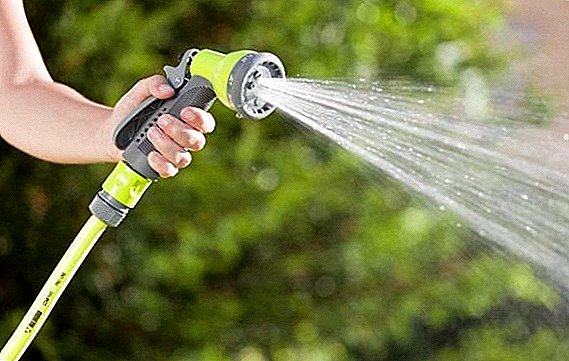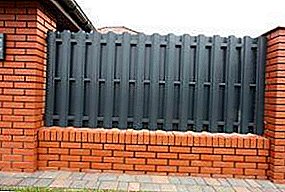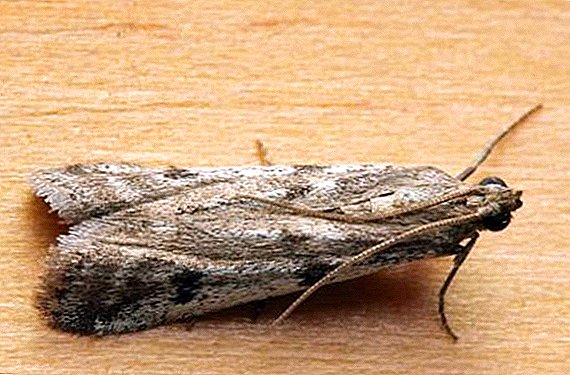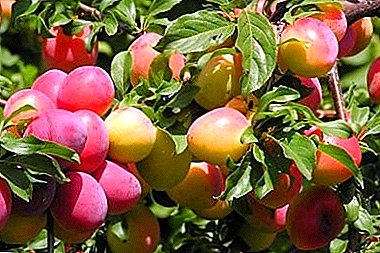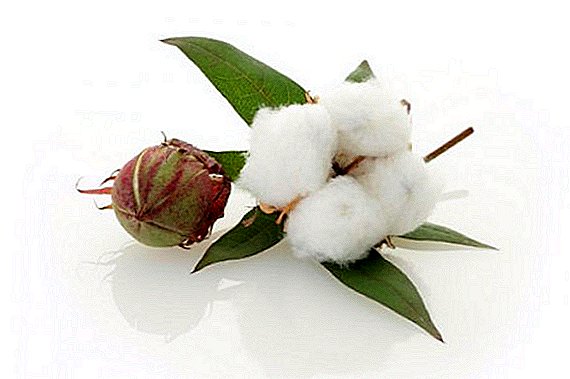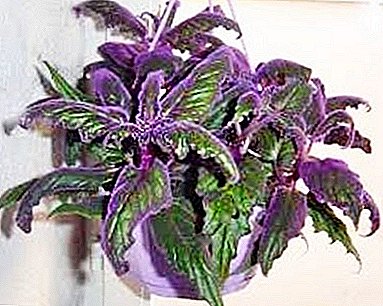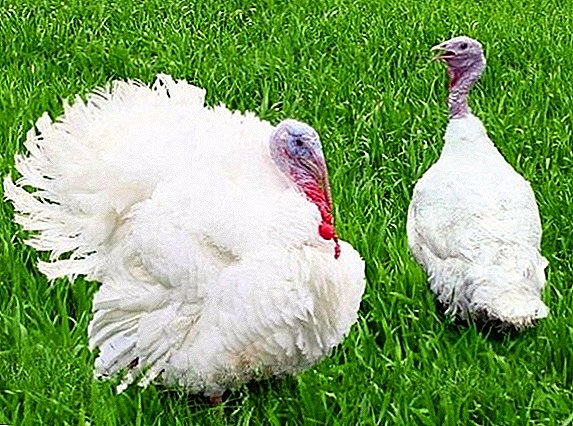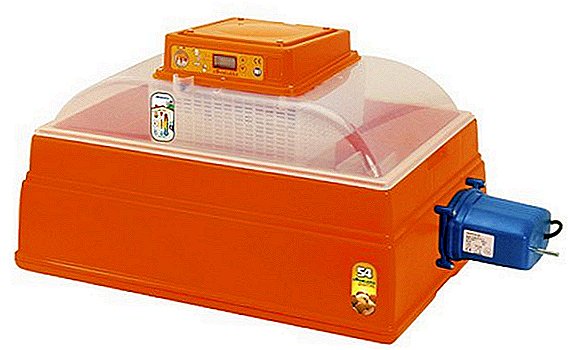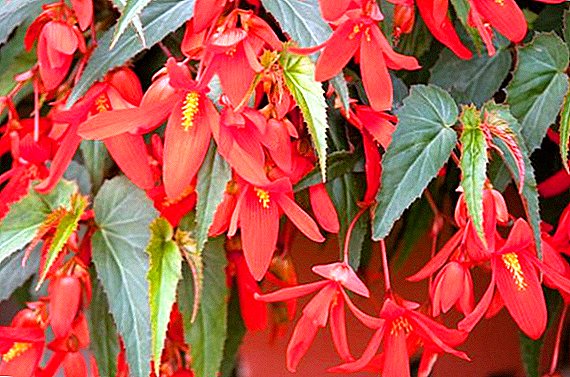 Begonia is very popular among flower lovers, partly due to the fact that this plant has many species and varieties. It is both decorative and leafy, and flowering, with upright stems and ampelous. One of the types of ampelous begonia is Bolivian. It is distinguished by flowers, unlike other species, long flowering, at the same time it is a very unpretentious plant.
Begonia is very popular among flower lovers, partly due to the fact that this plant has many species and varieties. It is both decorative and leafy, and flowering, with upright stems and ampelous. One of the types of ampelous begonia is Bolivian. It is distinguished by flowers, unlike other species, long flowering, at the same time it is a very unpretentious plant.
Variety description
Bolivian begonia refers to the ampelous species. Her shoots first grow vertically, and reaching a height of about 30 cm, begin to fall down a multi-tiered cascade.
The most popular varieties of this begonia:
- Copacabana - the prostrate plant differing in unpretentiousness. It has many flowers in the form of a bell, bright red.

- Santa Cruz Sunset - sprawling variety with ampelous shoots of about 40 cm. It blooms with orange-red flowers with a look like fuchsia.

- Bossa Nova - has shoots about 50 cm long, blossoms fuchsie like flowers of orange, red, pink and white. Flowering is long - from spring to frost.

Learn more about growing royal and tuberous begonias.
Growing from seed
Bolivian begonia is grown as an annual seed crop. To do this, they are sown from January to March, depending on the type of plant. The soil fits light and fertile.
The best mix for begonias is sand, peat and humus in equal parts and twice the size of leafy ground. Seeds should be placed on the surface of the substrate, not sprinkling earth on top.
The substrate can be covered with a thin layer of calcined sand, and already on it spread out the seeds. They must be constantly moistened with a spray bottle until shoots appear. Capacity cover with glass or film and put in a well-lit warm place.
Every day the greenhouse must be ventilated for 10 minutes. When the substrate dries, it is moistened with separated water. Shoots appear after about two weeks while maintaining the temperature above 20ºС.
Important! Seedlings should be highlighted with the help of special lamps, because they need a long light day.
 The first time the picking is carried out in the presence of 1-3 leaves, while the temperature is reduced by 16-18ºС. The second time they dive after two months, and the temperature is reduced by another couple of degrees. Once a week, young plants are fed with nitrogen-potassium fertilizer.
The first time the picking is carried out in the presence of 1-3 leaves, while the temperature is reduced by 16-18ºС. The second time they dive after two months, and the temperature is reduced by another couple of degrees. Once a week, young plants are fed with nitrogen-potassium fertilizer.Growing from cuttings and seedlings
Growing a Bolivian begonia from seed is a rather difficult and long process, so it is often grown from ready-made seedlings purchased from razvodchiki.
Cuttings are planted in containers with a diameter of about 15 cm in 1-2 pieces. in one container. Before planting, the cuttings should be treated with a fungicidal agent. Seedlings need to pinch: should leave about 3 pairs of leaflets. If this procedure is not carried out during rooting, it should be done two weeks after planting.
The first weeks to maintain the temperature at 18 ° C to 20 ° C, subsequently lowering to 15-17 ° C. Containers with cuttings should be shaded and not allowed to hit them in direct sunlight.
Watering is carried out only after complete drying of the soil. Fertilizers are applied once a week in the form of potash mineral fertilizers. Saplings are grown for 1.5-2 months, then transplanted to a permanent place.
Did you know? For the first time Begonia was discovered and described by the French monk Charles Plume in 1687.
Care
In the care of the plant quite unpretentious. For example, fertilizing and pruning are not mandatory conditions for the life of the plant, but they help to ensure its beautiful shape and abundant flowering.
Watering
In watering, you must adhere to moderation. It is necessary to ensure that the soil does not dry out, but at the same time not to over-wet it excessively. Begonia loves moisture, so its periodic spraying is not superfluous.  But this should be done at a sufficient distance from the plant, because the plant does not tolerate direct contact of the leaves with water.
But this should be done at a sufficient distance from the plant, because the plant does not tolerate direct contact of the leaves with water.
Top dressing
Bolivian begonia needs systematic fertilization with potash-phosphate fertilizers, this will ensure a long and abundant flowering. They need to be made in the kidney once a week.
Pruning
To form a beautiful cascade, the Bolivian amulet begonia needs to be cut off. In addition, this procedure allows to improve flowering and rejuvenate the plant.
Since begonia grows fast enough, pruning should be done in a timely manner. Otherwise, flowering may disappear, since the plant will direct all its forces into the growth of green mass.
The first pruning is carried out when the stems reach 7-8 cm, then the shape of the future bush is shaped. With a stalk length of about 12 cm, it is necessary to trim the tops, this will wake up the lateral buds.  Next, pruning is done as new apical shoots appear and they need to be removed and redirected to lateral shoots.
Next, pruning is done as new apical shoots appear and they need to be removed and redirected to lateral shoots.
Important! It is forbidden to use scissors for trimming, as they can severely injure the stem. It is recommended to use a sharp knife.
Diseases and pests
Nematodes, spider mites and aphids, as well as the fungus, which can provoke the appearance of gray rot, are the most dangerous for begonias. Fight against these pests is carried out with the help of fungicides.
Diseases are provoked by improper care:
- pale leaves - insufficient lighting;
- wilting and subsequent falling off of leaves and ovaries of flowers - insufficient moisture of the soil or air;
- twisting and drying leaves, white bloom on them (powdery mildew) - excessive moisture or the presence of water and condensation on the leaves;
- Drying the tips of the leaves is a violation of the irrigation regime.
To begonia beautifully blossomed you need to know how to deal with the main diseases and pests of the flower.

Application in landscape design
In addition to the content of the Bolivian begonia at home, it is often used in the open field for landscape design. It is planted in flower beds or flower beds, where it spreads along the surface.
Heliotrope, Echinocystis, Alyssum, Host, Loch Silver, Tradescantia, Chionodox, Young, Pyrethrum, Lychnis, Alstroemeria - are also often used in landscape design.Or placed on a roller coaster, in hanging pots or containers, where it forms a beautiful cascade. Also used to decorate balconies and porches.
As you can see, planting and growing begonias in the garden, as well as caring for her, is easy, but this beauty will undoubtedly be able to decorate your space. 
Did you know? The expedition, whose members discovered this flower, was organized in the town of Rochefort. In 1986, the largest collection of these plants, the Begonia Orangery, was created in this city.





